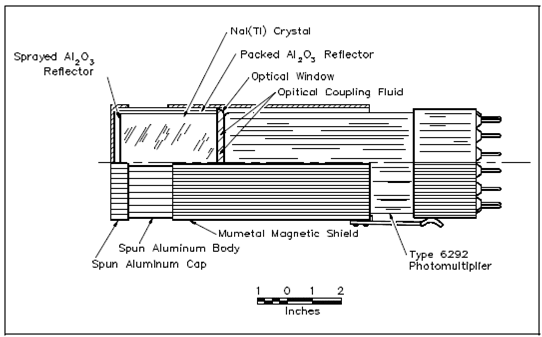Scintillation Counter:
Scintillation counters are constructed through coupling an appropriate scintillation phosphor to a light- sensitive photomultiplier tube. Below figure describes an instance of a scintillation counter by using a thallium-activated sodium iodide crystal.

Figure: Scintillation Counter
Three classes of solid state scintillation phosphors: inorganic crystals, organic crystals and plastic phosphors.
Inorganic crystals involve LiI (lithium iodide), NaI (sodium iodide), CsI (cesium iodide), and ZnS (zinc sulfide). Inorganic crystals are featured through high atomic number, high density and pulse decay times of around 1 microsecond. Therefore, they exhibit high efficiency for detection of gamma rays and are capable of handling high count rates.
Organic scintillation phosphors involve stilbene, naphthalene, and anthracene. The decay time of this category of phosphor is around 10 nanoseconds. This category of crystal is often used in the detection of beta particles.
Plastic phosphors are made through adding scintillation chemicals to a plastic matrix. Decay constant is the shortest of the three phosphor category, approaching 1 or 2 nanoseconds. The plastic has high hydrogen content; thus, it is meaningful for fast neutron detectors.